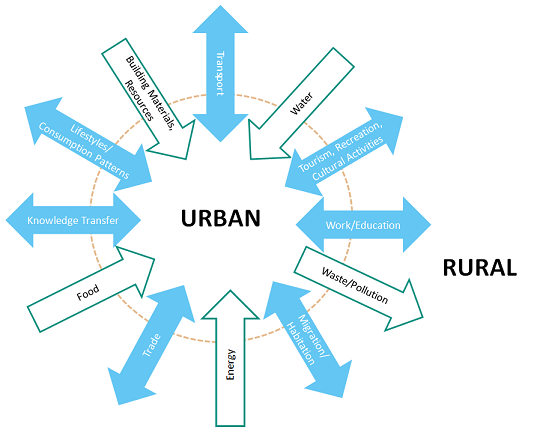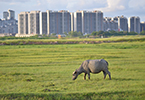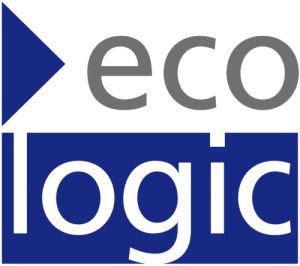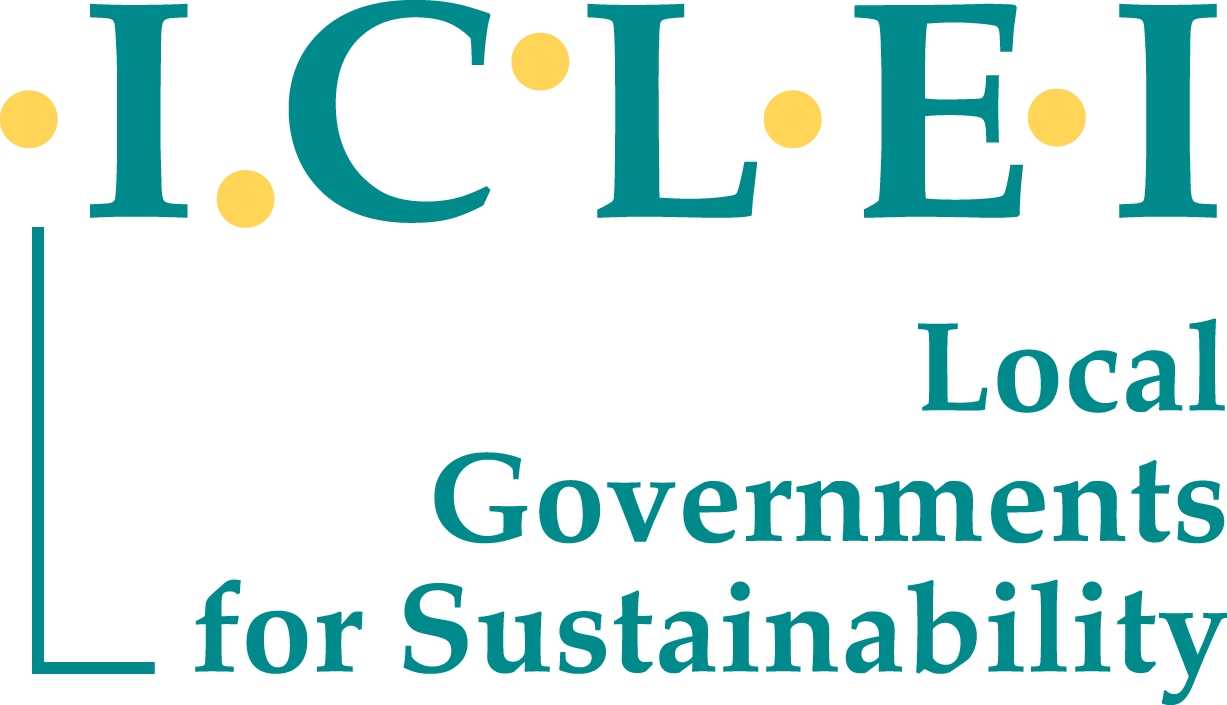About the project
Between 2016 and 2019 the project "Rural Urban Nexus – Global sustainable land use and urbanisation" developed conceptual approaches and policy recommendations directed at an integrated and sustainable rural and urban development.
Background
More than half of the world population lives in urban areas. By 2050, this share is expected to increase to 66% (UN DESA 2014). Urban areas only account for 3% of the earth’s surface, but contribute 80% of the global economic output. They are responsible for 76% of the consumption of natural resources, 60% of GHG emissions, and 50% of the world’s waste.
The future of urbanisation also has implications for the relationship between cities and their surrounding rural areas. Both have always been interconnected and related over the exchange of goods, services, people, ecosystem services, exchange of knowledge, trade etc. (see figure below). Through changes in economic patterns, ICT innovations, regional urbanisation and through the exchange of goods and people across further distances, the borders between cities and rural areas are becoming increasingly blurred.
At the same time, policies for rural and urban development continue to be largely disconnected and rarely discussed from an integrated perspective, leading to an often cited rural-urban-dichotomy. For the sustainability of cities and their surrounding region, it is therefore crucial to develop concepts, instruments and governance principles that can address the increasing necessity of integrated planning.

Figure 1: Exchanges and interactions of the rural-urban-metabolism (adapted from Repp et al. 2012)
Project goal
The goal of the project, was to develop integrated approaches for a viable relationship between rural and urban areas and to demonstrate linkage points to global sustainable land use in the context of urbanisation.
With this, the project contributed to overcoming “silo thinking” with an integrated approach, bringing together relevant sectoral policies on different levels and involving rural areas more strongly in the rural-urban-discourse. The project was carried out on behalf of the German Federal Environment Agency (UBA) and the German Federal Ministry for the Environment (BMUB).
The project started with a review of the current state of information on the rural-urban nexus. Specifically this included an analysis of existing development concepts, i.e. for urban planning, for insights for sustainable rural-urban planning; analysis of resource metabolism between cities and surrounding (rural) areas; as well as examination of the connection between cities and surrounding areas in regard to food production and consumption. Alongside a general literature review, concrete examples of a successful rural-urban nexus have been collected and analysed. In parallel, political processes, such as the implementation of the UN Sustainable Development Goals (SDGs) and the “New Urban Agenda” developed for the Habitat III Conference in 2016 were analyzed to identify entry points to strengthen rural urban linkages.
Building on this work, an overarching theoretical concept of a sustainable rural-urban nexus has been developed and discussed with experts, stakeholders, and practitioners.
Finally, conclusions and recommended actions were derived about the cornerstones for a sustainable rural-urban nexus and policy recommendations for German policy makers.
Here you can download the Rural Urban Nexus project flyer (PDF, English)







